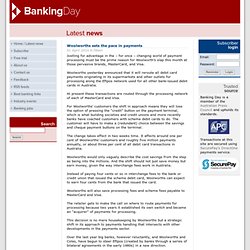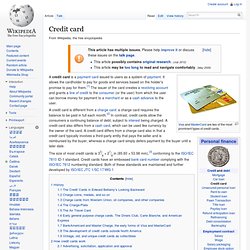

Paymark ETSL. NZ payment system. Credit card and debit card statistics for Australia and the worl. Card payments in Asia Pacific: the state of the nations. Woolworths sets the pace in payments. Jostling for advantage in the – for once – changing world of payment processing must be the prime reason for Woolworth’s slap this month at those pervasive brands, MasterCard, and Visa.

Woolworths yesterday announced that it will reroute all debit card payments originating in its supermarkets and other outlets for processing along the Eftpos network used for all other bank-issued debit cards in Australia. At present these transactions are routed through the processing network of each of MasterCard and Visa. For Woolworths’ customers the shift in approach means they will lose the option of pressing the “credit” button on the payment terminal, which is what building societies and credit unions and more recently banks have coached customers with scheme debit cards to do. The customer will have to make a (redundant) choice between the savings and cheque payment buttons on the terminal. The change takes effect in two weeks time.
Illawarra Credit Union : Woolworths Change Checkout Payment Opti. Credit card. "Smart card" credit card with embedded microchip An example of the front in a typical credit card: Issuing bank logoEMV chip on "smart cards"HologramCredit card numberCard brand logoExpiration DateCard Holder Namecontactless chip A credit card is a payment card issued to users as a system of payment.

It allows the cardholder to pay for goods and services based on the holder's promise to pay for them.[1] The issuer of the card creates a revolving account and grants a line of credit to the consumer (or the user) from which the user can borrow money for payment to a merchant or as a cash advance to the user. A credit card is different from a charge card: a charge card requires the balance to be paid in full each month.[2] In contrast, credit cards allow the consumers a continuing balance of debt, subject to interest being charged. A credit card also differs from a cash card, which can be used like currency by the owner of the card.
History Collectible credit cards How credit cards work. Credit card. Visa and MasterCard are two of the most prominent types of credit cards.

An example of the front in a typical credit card: An example of the reverse side of a typical credit card: A credit card is a payment card issued to users as a system of payment. It allows the cardholder to pay for goods and services based on the holder's promise to pay for them.[1] The issuer of the card creates a revolving account and grants a line of credit to the consumer (or the user) from which the user can borrow money for payment to a merchant or as a cash advance to the user. A credit card is different from a charge card: a charge card requires the balance to be paid in full each month.[2] In contrast, credit cards allow the consumers a continuing balance of debt, subject to interest being charged.
The size of most credit cards is 3 3⁄8 × 2 1⁄8 in (85.60 × 53.98 mm),[3] conforming to the ISO/IEC 7810 ID-1 standard. History[edit] The Credit Cards in Edward Bellamy's Looking Backward[edit] The Charga-Plate[edit] WZ_1004_E_MajorBusinessSectors-Neuseeland.pdf (application/pdf O. Credit card statistics, industry facts, debt statistics.